Health and Wellness
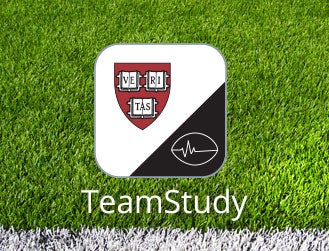
TeamStudy
| Principal Investigator | Alvaro Pascual-Leone, MD, PhD, Beth Israel Deaconess Medical Center |
| Summary | TeamStudy was the first app dedicated to understanding the health and wellness of former professional football players by engaging thousands of former NFL players and the general public alike. Collecting information from large numbers of people on a consistent basis contributes to developing accurate scientific discoveries that address the diverse health needs of former NFL players and others. In gathering health data from adults of all ages, genders, and cultures, with a specific focus on former NFL players, TeamStudy provided fundamental new insights into the following areas: cognition and cognitive reserve, cardiac health, and mobility. An initiative of the Football Players Health Study at Harvard University, the app utilized Apple’s ResearchKit framework. |
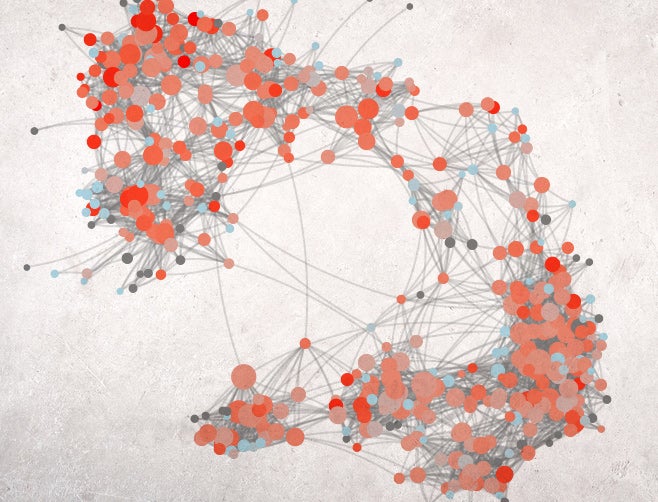
Personal Networks of Football Players: Association with Functional, Cardiac, and Cognitive Outcomes
| Principal Investigators | Amar Dhand, MD, DPhil, Brigham and Women's Hospital Alvaro Pascual-Leone, MD, PhD, Harvard Medical School Albert-László Barabási, PhD, Robert Gray Dodge Professor of Network Science and a Distinguished University Professor, Northeastern University |
| Summary | Retired NFL football players experience changes to their social life due to transitions away from a team environment, change of leisure activities, and need to re-define relationships with family and friends. The resulting personal networks affect physical health and the aging process. This targeted study aims to characterize the personal networks of former football players using a web-based survey, and look for links with cognitive, cardiac, and functional outcomes. |

In-Person Assessments
| Principle Investigator | Meagan Wasfy, MD, Massachusetts General Hospital |
| Summary | The In-Person Assessment Study reflects the initial findings from the First Health and Wellness Questionnaire (Q1) and focuses on four areas of player health that have been identified as critical: cardiovascular function, neurocognitive health, pain, and physical function and sleep. Through a series of head-to-toe evaluations conducted at Harvard-affiliated hospitals, this study aims to provide novel insights into these specific health domains while improving our overall understanding of the impact of playing professional football. |

EverActive Technologies
| Summary | The goal of this project is to develop a compact, low-cost strength tracking wearable system that can be used at home or on the go. This will be achieved through a unique sensing system and accompanying algorithms that are capable of seamlessly monitoring force, reps, amplitude of motion, and other metrics during free body exercises (e.g. squats, pushups) and training with functional equipment (weights, resistance bands, suspension straps). The system will also assess fitness level, rapidly generate personalized training programs, and provide real-time feedback during sessions. |
Brain Function
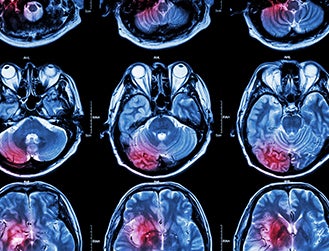
Concussions – Red/Near-Infrared Light Therapy for Traumatic Brain Injury
| Principal Investigators | William Meehan III, MD, Boston Children’s Hospital Ross Zafonte, DO, Spaulding Rehabilitation Hospital Michael Whalen, MD, Massachusetts General Hospital |
| Summary | One of the current hypotheses regarding prolonged recovery after concussion contends that there is a need for more energy in the form of adenosine triphosphate, more commonly known as ATP. When shined on cells in culture, light in the red-near infrared spectrum results in greater ATP synthesis. Thus, shining light on brain cells after a concussion might result in a greater increase in ATP and, perhaps, a faster recovery. In fact, in conjunction with Marney Naeser, PhD, and others, the results of preliminary animal studies and in-human trials have been published in the Journal of Neurotrauma, Lasers in Surgery and Medicine, and Photomedicine and Laser Surgery. This hypothesis is currently being tested in a double-blinded, randomized controlled trial with funding from the Football Players Health Study. |

Gary Strangman, PhD
Preventing Injuries in Football: On-Field Brain Movement and Activity Monitoring
| Principal Investigator | Gary Strangman, PhD, Massachusetts General Hospital |
| Summary | Brain injuries in contact-sports are a serious concern, but to date it has only been possible to measure the acceleration of the head or helmet, not the all-important movement of the brain inside the skull. Recent advances in our lab may make it possible—for the first time—to non-invasively monitor the direction and amplitude of brain movement inside the skull, even while players are on the field. This capability, which will undergo initial validation and feasibility testing via this project, will help provide a more objective and quantitative understanding of how and when football players sustain head injuries, and provide improved guidance on how to reduce or eliminate such injuries. |

Kun Ping Lu, MD, PhD
Antibody Therapy for Treating Brain Injury and Chronic Traumatic Encephalopathy
| Principal Investigator | Kun Ping Lu, MD, PhD, Beth Israel Deaconess Medical Center |
| Summary | Exposure to repetitive mild traumatic brain injury can lead to progressive neurodegeneration, notably chronic traumatic encephalopathy and Alzheimer’s disease, but there is currently no effective treatment. We have not only recently discovered a novel early driver of neurodegeneration after traumatic brain injury, cis p-tau, that mediates and spreads brain damage, but also developed a potent therapeutic agent, cis antibody, that effectively stops cis p-tau from causing brain damage, brain dysfunction, and even brain shrinkage after single severe traumatic brain injury. Here, we will evaluate preclinical efficacy of our cis antibody in stopping brain damage and preventing chronic traumatic encephalopathy and Alzheimer’s disease after repetitive mild traumatic brain injury, and, depending on the funding level, will additionally develop a humanized cis p-tau antibody that is needed for clinical trials on TBI patients. |
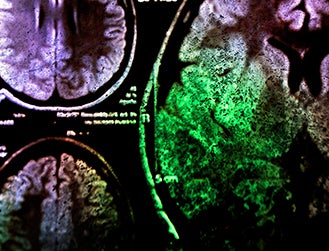
Neuroimaging Workgroup
| Faculty Leaders | Georges El Fakhri, PhD, DABR, Massachusetts General Hospital Michael Fox, MD, PhD, Beth Israel Deaconess Medical Center |
| Summary | The Neuroimaging Workgroup is a diverse team of imaging and neurology experts from Harvard’s affiliated teaching hospitals. Drawing on their experience in neuroimaging, this collaborative research effort supports the goals of the Football Players Health Study through research on and development of brain imaging biomarkers for the injuries and illnesses that former professional football players face, with the ultimate goal of creating new strategies for diagnosis and prevention. |
Brain Health Study
| Principal Investigators | Laura Germine, PhD, McLean Hospital Alvaro Pascual-Leone, MD, PhD, Harvard Medical School |
| Summary | The purpose of this research is to gain a better understanding of brain health in former professional football players. Through a series of online assessments that evaluate memory, attention, personality and temperament, this study collects data on individuals’ ability to think and process information. The study is currently open to former NFL players and offers personalized feedback following the completion of assessments. This research is in collaboration with TestMyBrain, a not-for-profit brain and mind initiative at Harvard Medical School. Along with the Football Players Health Study’s concurrent initiatives, this web-based assessment is intended to collect information that will improve our overall understanding of the health impact of undertaking a professional football career. |
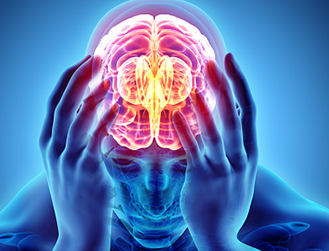
A Prospective Controlled Treatment Trial for Post-Traumatic Headaches
| Principal Investigators | Alyssa Lebel, MD, Boston Children’s Hospital Alexandra M. Stillman, MD, Beth Israel Deaconess Medical Center Pradeep Dinakar, MD, MS, MBA, FAAP, Boston Children’s Hospital |
| Summary | Post-traumatic headaches (PTH) are the most common complaint of football-related traumatic brain injury, possibly generated by a number of stressors. This study aims to conduct a controlled treatment trial to evaluate the efficacy of medications and minimally invasive nerve block interventions as treatments for PTH and neck pain in adolescents and adults with PTH aged 16-35 years of age. |

Innovative New Drug for Traumatic Brain Injury and CTE
| Principal Investigators | Kun Ping Lu, MD, PhD, Beth Israel Deaconess Medical Center Xiao Zhen Zhou, MD, Beth Israel Deaconess Medical Center |
| Summary | The study investigators provided evidence that rmTB can directly cause CTE in animal models and identified an early disease driver that instigates and propagates brain damage after TBI. Moreover, they have developed an innovative neutralizing antibody that effectively stops brain damage and fully prevents CTE after rmTBI in animal models. This study aims to translate preliminary findings from animal models into a humanized antibody for future use in a clinical trial. |
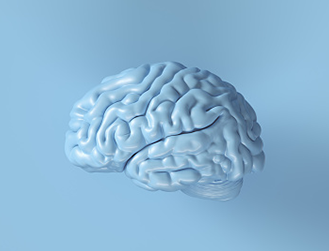
Low Level Near Infrared Laser Light to Reduce Cognitive Sequelae of Concussion in Mice
| Principal Investigator | Michael Whalen, MD, Massachusetts General Hospital |
| Summary | This study is a parallel study in animal model to the one led in humans. It seeks to identify mechanistic insights into the potential beneficial effects of non-invasive light therapy on recovery from concussion, and prevention from lasting cognitive deficits after repeated TBI. |

Brain Trauma Profiles Associated with Player Positions in American Football
| Principal Investigator | Blaine Hoshizaki, PhD, University of Ottowa |
| Summary | This study aims to reconstruct impact situations from game film in order to understand the character and magnitude of brain trauma experienced by NFL football athletes and to gain better insight into what amount of brain tissue trauma load is associated with the development of neurological disorders. |

Swine Model of Concussion
| Principal Investigators | Rebekah Mannix, MD, MPH, Boston Children’s Hospital Georges El Fakhri, PhD, Massachusetts General Hospital |
| Summary | This study developed a clinically relevant closed head injury model of concussion in swine to evaluate the correlation of in vivo tau PET with tau histopathology with the aim to create a new clinically relevant platform to study mechanistic questions as well as therapeutic interventions in concussion, and serve as an important cross-validation of new in-vivo imaging modalities for tau pathology. |

TBI Models (Mouse)
| Principal Investigators | Rebekah Mannix, MD, MPH, Boston Children’s Hospital Michael Whalen, MD, Massachusetts General Hospital |
| Summary | This collaborative study brought together experts from Harvard Medical School institutions on TBI animal models, to generate critical novel insights that can bridge the gap between model systems and human studies, identify valuable diagnostic biomarkers for human disease, and provide reliable high throughput assays. |
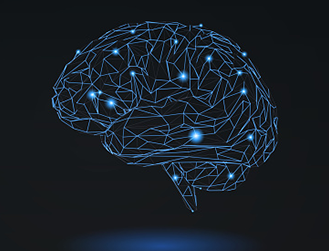
Treatment of the Persistent Post-Concussion Syndrome with Transcranial Light Emitting Diodes
| Principal Investigator | William Meehan III, MD, Boston Children’s Hospital |
| Summary | The purpose of this study is to investigate whether transcranial, high intensity LED applied outside the skull can improve frontal lobe function and working memory in participants with mild TBI, at least 6 months prior, who met the diagnostic criteria for a persistent post-concussion syndrome. |

NoMo Diagnostics
| Summary | Avoiding life threatening, long-term consequences associated with unrecognized traumatic brain injury is the goal of developing this first FDA-approved, real-time, physiologically relevant brain health diagnostic to initiate early treatment. The miniaturized brainwave monitoring technology is designed to fit comfortably under the helmet delivering rapid notification to both the affected individual and the coaches and staff on the sideline using a mobile app with a telemetry feature. The Football Players Health Study is supporting user research for this diagnostic tool with athletic trainers and team physicians of collegiate football teams. |
Heart Function
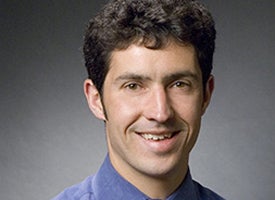
Aaron Baggish, MD
Cardiac Issues Among Athletes – Myocardial Dysfunction of Football Players
| Principal Investigator | Aaron Baggish, MD, Massachusetts General Hospital |
| Summary | Many football players are strength-trained athletes, as opposed to endurance athletes, as they train for repetitive bursts of intense activity. This strength training may affect the heart differently than endurance training. Specifically, strength training may make the walls of the heart stiff and inflexible, which challenges the heart to work to fill with blood. Findings suggest that linemen, by virtue of their training program, develop a particular form of left ventricle enlargement that increases risk of cardiac disease. |
Law & Ethics

Protecting and Promoting the Health of NFL Players: Legal and Ethical Analysis and Recommendations
| Principal Investigators | Christopher R. Deubert, JD, MBA, Petrie-Flom Center for Health Law Policy, Biotechnology, and Bioethics I. Glenn Cohen, JD, Harvard Law School, Petrie-Flom Center for Health Law Policy, Biotechnology, and Bioethics Holly Fernandez Lynch, JD, M.Bioethics, Petrie-Flom Center for Health Law Policy, Biotechnology, and Bioethics |
| Summary | This initiative identifies stakeholders in player health, analyzes their legal and ethical obligations, evaluates current successes, and identifies gaps and opportunities for each stakeholder in protecting and promoting player health. Finally, it applies a series of legal and ethical principles to arrive at recommendations for positive change where needed. The stakeholders discussed are: NFL players, the NFL, NFL clubs and personnel, NFL coaches, NFL club medical staff, second opinion, neutral and personal doctors, the NFLPA, contract advisors, financial advisors, equipment managers and manufacturers, players’ family members, officials, the media, NFL business partners, and fans. Our report includes more than 70 recommendations aimed at improving player health. Read the full report. |

Hastings Center Report – Special Report: A Proposal to Address NFL Club Doctors’ Conflicts of Interest and to Promote Player Trust
| Principal Investigators | Christopher R. Deubert, JD, MBA, Petrie-Flom Center for Health Law Policy, Biotechnology, and Bioethics I. Glenn Cohen, JD, Harvard Law School, Petrie-Flom Center for Health Law Policy, Biotechnology, and Bioethics Holly Fernandez Lynch, JD, M.Bioethics, Petrie-Flom Center for Health Law Policy, Biotechnology, and Bioethics |
| Summary | This project urges the NFL, NFLPA, and other stakeholders to adopt the principal recommendation of our report, “Protecting and Promoting the Health of NFL Players: Legal and Ethical Analysis and Recommendations,” for addressing the conflicts of interest inherent in the current structure of NFL player healthcare, in which club medical staff provide services to both the club and players. Read the article here. The authors received commentaries from a diverse and highly-qualified group of experts, including lawyers, bioethicists, a former player, a former player who is now a doctor, a current player who is also a medical student, an NFLPA consultant, and the NFL Physicians Society, the organization that represents NFL club doctors. Read the commentaries here. The authors published a response to the commentaries, which can be read here. |

Evaluating NFL Player Health and Performance: Legal and Ethical Issues
| Investigators | Jessica L. Roberts, JD, University of Houston Law Center I. Glenn Cohen, JD, Harvard Law School, Petrie-Flom Center for Health Law Policy, Biotechnology, and Bioethics Holly Fernandez Lynch, JD, M.Bioethics, Petrie-Flom Center for Health Law Policy, Biotechnology, and Bioethics Christopher R. Deubert, JD, MBA, Petrie-Flom Center for Health Law Policy, Biotechnology, and Bioethics |
| Summary | This research investigates the path of a hypothetical college football player who has aspirations to play in the NFL, addressing from a legal and ethical perspective the types of health and performance evaluations he will likely be subjected to throughout his career. Some of these evaluations are commonplace and familiar, while others are more futuristic – and potentially of unproven value. How much information about themselves should aspiring and current professional players be expected to provide in the context of employment? What are the current legal standards for employers as they collect, and act on, an individual’s health-related information? Drawing on disability law, privacy law, and the law regarding genetic testing, this article seeks to answer these questions, as well as provide recommendations to better protect the health and privacy of professional football players. Read the article. |

Comparing Health-Related Policies and Practices in Sports: The NFL and Other Professional Leagues
| Principal Investigators | Christopher R. Deubert, JD, MBA, Petrie-Flom Center for Health Law Policy, Biotechnology, and Bioethics I. Glenn Cohen, JD, Harvard Law School, Petrie-Flom Center for Health Law Policy, Biotechnology, and Bioethics Holly Fernandez Lynch, JD, M.Bioethics, Petrie-Flom Center for Health Law Policy, Biotechnology, and Bioethics |
| Summary | This report examines the policies and practices of the NFL that concern player health, and compares them to those of other major professional sports leagues: Major League Baseball; the National Basketball Association; the National Hockey League; the Canadian Football League; and, Major League Soccer. After analyzing the leagues, the report compares each one to the NFL on the following health-related issues: (1) Club Medical Personnel (including discussion of conflicts of interest); (2) Injury Rates and Policies (including detailed comparisons of concussion rates); (3) Health-Related Benefits (including health insurance and retirement benefits for current and former players); (4) Drug and Performance-Enhancing Substance Policies; (5) Compensation (including guaranteed compensation); and, (6) Eligibility Rules (including discussion of the “readiness” of athletes for professional play). Ultimately the report makes nine recommendations for better protecting and promoting NFL player health. |

Qualitative Study/Listening Tour
| Principal Investigators | Sarah McGraw, PhD, The Hastings Center Christopher R. Deubert, JD, MBA, Petrie-Flom Center for Health Law Policy, Biotechnology, and Bioethics I. Glenn Cohen, JD, Harvard Law School, Petrie-Flom Center for Health Law Policy, Biotechnology, and Bioethics Holly Fernandez Lynch, JD, M.Bioethics, Petrie-Flom Center for Health Law Policy, Biotechnology, and Bioethics |
| Summary | This study consists of a series of one-on-one interviews that solicit direct feedback from approximately 40-60 current and former players and their families. The goal is to better understand the perspectives of these key stakeholders on the following topics: overall NFL experience; improving player safety; health, family and social issues; support as a professional athlete; life after football; risk disclosure and risk taking; healthcare and club medical staff; medical screenings; and injury and pain management. Findings from this study will inform the NFL, NFLPA, and other stakeholders on how to better understand and prioritize action concerning player health matters. |
Pain and Mobility

Martha Murray, MD
Anterior Cruciate Ligament (ACL) Repair – A Novel Treatment for ACL Injuries
| Principal Investigator | Martha Murray, MD, Boston Children’s Hospital |
| Summary | In 2013, NFL players suffered approximately 65 anterior cruciate ligament (ACL) tears. Currently, the torn ACL cannot heal itself and needs, instead, to be reconstructed by a surgeon. Even with reconstruction, many athletes do not return to their prior level of performance, often ending their careers shortly after an ACL tear. Furthermore, the risk of osteoarthritis after an ACL tear, even with successful ACL reconstruction, is approximately 80% within 14 years. Murray, a Harvard researcher, has been working on an innovative solution that allows the torn ACL to heal itself by using a bridge or scaffold to hold blood products in between the two torn ends of the ACL long enough for surrounding cells to grow into and reunite the separated ends. In animal studies using Murray’s technique, not only does the ACL heal itself, but there is no resulting osteoarthritis. With support from the Football Players Health Study at Harvard, in addition to other funding, Murray has translated her technique from the laboratory and launched the first ever clinical trial with full approval from the Federal Drug Administration. Paper: Changes in Cross-sectional Area and Signal Intensity of Healing Anterior Cruciate Ligaments and Grafts in the First 2 Years After Surgery |
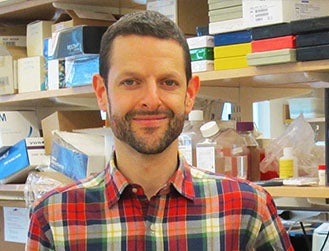
Jeffrey Karp, PhD
An Inflammation Responsive Hydrogel Depot for On-Demand Drug Delivery in Treatment of Post-traumatic Osteoarthritis (PTOA) in Football Players
| Principal Investigators | Jeffrey Karp, PhD, Brigham and Women’s Hospital Joerg Ermann, MD, Brigham and Women’s Hospital |
| Summary | The proposed study aims to develop a disease modifying, self-titrating and intra-articular therapy for the treatment of post-traumatic osteoarthritis (PTOA). This will involve the development of inflammation responsive hydrogels for delivery of disease modifying agents. Such an autonomous and biologically driven disease modifying therapy may significantly impact the health of former, current, future football players, and other athletes who are at significant risk of developing joint degenerative PTOA. Treating inflammatory arthritis with hydrogel |

Conor Walsh, PhD
Protect-When-Needed (PWN) Knee Bracing Technology for Prevention of Knee Injuries in NFL Players using Soft Functional Materials
| Principal Investigators | Conor Walsh, PhD, Harvard John A. Paulson School of Engineering and Applied Sciences, and Wyss Institute for Biologically Inspired Engineering Ata Kiapour, PhD, Boston Children's Hospital, and Wyss Institute for Biologically Inspired Engineering |
| Summary | The primary aim of this proposed work is to address a pressing unmet need in the NFL by demonstrating a new paradigm in protective wear. We propose to develop and evaluate Protect-When-Needed Knee Bracing Technology (PWN Bracing) that will provide adequate support to the knee joint, when required (high-risk events), without affecting normal performance levels and joint function during low-risk activities. This is based on our team’s deep expertise in soft functional materials and understanding of the mechanisms of injury and limitations of current technology in addressing these. |
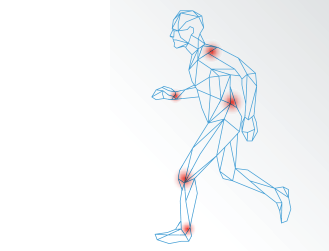
Goal-Directed Resilience Training to Mitigate Chronic Pain in Former Football Players (GRIT)
| Principal Investigators | Herman Taylor, MD, MPH, FACC, FAHA, Morehouse School of Medicine |
| Summary | Chronic pain, due to years of intense training and performance, threatens quality of life, and the culture of elite athletes is not well adapted to the chronic condition of pain. This targeted study will develop a remote assessment strategy to identify former players who may benefit from strategies to build skills that improve self-management and experience of chronic pain, and a skill-building intervention to identify the potential benefits for those at high risk. Innovative strategies will be created that are both culturally acceptable and effective to help former football players overcome the physical pain that commonly results from years of intense training and performance. |

Blocking Extracellular Galectin-3 in Patients with Osteoarthritis (Modified Citrus Pectin Trial)
| Principal Investigators | Christene A. Huang, PhD, Massachusetts General Hospital Mark C. Fisher, MD, MPH, Massachusetts General Hospital |
| Summary | Modified citrus pectin, a dietary supplement derived from citrus peels, has been shown to block extracellular galectin-3 and reduce chronic inflammation. This study evaluated whether modified citrus pectin was effective as a therapy for the signs and symptoms of osteoarthritis. |
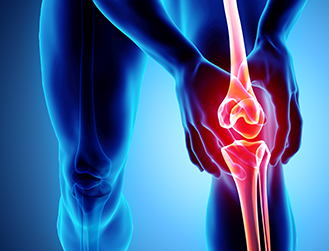
Ocelot: In-office Device for Treatment of Tendinopathy
| Principal Investigator | Gerard Malanga, MD, New Jersey Regenerative Institute |
| Summary | Former professional football players frequently experience chronic tendon pain, and conservative treatments are often not enough to successfully reduce their pain. This project will further develop The Ocelot System, a platform to deliver and improve care of chronic tendon pain. The Ocelot device jump-starts regeneration of pathologic tendons by mechanically disrupting the precise area of injury under ultrasound imaging guidance in a physician’s office. Real time feedback of the mechanical properties of the tendon allows for more personalized and consistent treatment by the physician. Compared to currently available specialized treatments for chronic tendon pain, this solution is not only less expensive, but can be administered in a physician office as opposed to a hospital-based surgical setting. |

J-PRO, Novel Treatment for Early Osteoarthritis
| Principal Investigator | Martha Murray, MD, Boston Children’s Hospital |
| Summary | This study proposes to advance the development of a novel treatment for early osteoarthritis. This treatment is a product called “J-PRO”, a hydrogel that can be injected into an injured joint to reduce the risk of developing osteoarthritis. The study aims to quantify the cellular composition of the hydrogel to optimize the stimulation of cells that contribute to bone development. |
Perception and Communication

Risk Communication About Injury in Football
| Principal Investigator | Kasisomayajula Viswanath, PhD, Harvard T.H. Chan School of Public Health |
| Summary | Participation in organized football presents both risks and benefits. In order to make a decision about whether or not to participate in organized football, individuals must accurately appraise the risk-related information and then weigh future health risks against current and future financial, psychological, physical, and social benefits. Given the complex, and in some case unknown, risks associated with football participation, the goal of this program of research is to create effective risk communication strategies that inform and empower individual athletes to make informed autonomous decisions related to beginning, continuing, or ceasing football participation. |
Sleep

Developing a Scalable Sleep Health Intervention to Improve Pain, Quality of Life, and Health in Football Players
| Principal Investigators | Suzanne Bertisch, MD, MPH, Harvard Medical School and Beth Israel Deaconess Medical Center Susan Redline, MD, MPH, Peter C. Farrell Professor of Sleep Medicine, Harvard Medical School, Brigham and Women's Hospital, and Beth Israel Deaconess Medical Center |
| Summary | Sleep plays a fundamental role in multiple aspects of health and wellness, including pain, mood, heart health, and quality of life. The primary aim of this study is to adapt a brief web-based, sleep health intervention for former NFL players, and to evaluate its impact on sleep health, and through this on pain and other health-related outcomes. This is a targeted population study – focusing on former football players with poor sleep and related medical conditions, including daily pain, mood problems, and cardiac disability. The long-term goal of this targeted study is to develop a program that will not only help improve sleep, but will also decrease pain and improve daily functioning and quality of life among players on a large scale. Recruitment for this study is closed, and we expect to publish results in 2021. |
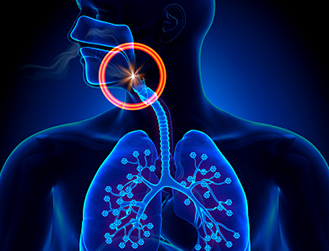
Cold Fluid Injections for Treatment of Obstructive Sleep Apnea (OSA) (mouse model)
| Principal Investigator | R. Rox Anderson, MD, Massachusetts General Hospital |
| Summary | Obstructive Sleep Apnea (OSA) is a pressing, life-threatening problem affecting up to 34% of active NFL athletes and up to 52% of retired NFL players, due to enlarged fat in the neck and upper airway which when combined with building up muscle in the neck, compresses the upper airway and impairs their ability to breathe while sleeping. The goal of this study is to demonstrate, with mice, the safety and efficacy of using injectable cold fluid to selectively target and remove OSA-associated fat deposits in the neck and upper airway. This strategy could become a novel, minimally invasive and well tolerated cure for sleep apnea. |

